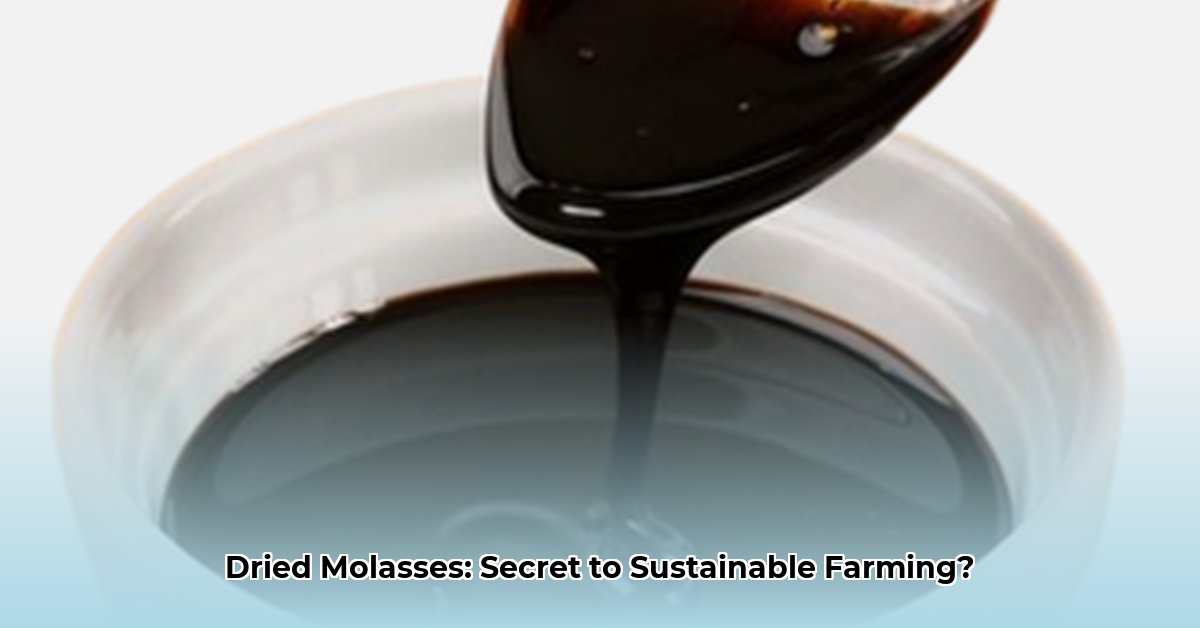
Dried molasses, readily available at Tractor Supply, presents a compelling yet under-researched opportunity for sustainable agricultural practices. While its use in livestock feed is established, its potential as a soil amendment and biofuel source remains largely unexplored. This guide examines current knowledge, identifies critical research gaps, and provides actionable steps for farmers, researchers, and policymakers.
Dried Molasses: A Sustainable Agriculture Deep Dive
This article explores the multifaceted potential of dried molasses in sustainable agriculture, highlighting both its established applications and the significant research required to fully realize its potential. We will analyze its use as livestock feed, explore its theoretical applications as a soil amendment and biofuel, and compare available products from Tractor Supply.
Dried Molasses as Livestock Feed: Sweet Treat or Smart Supplement?
Many farmers utilize dried molasses, such as Tractor Supply's Prairie Pride brand, as a livestock feed supplement, primarily due to its palatability. However, a comprehensive understanding of its nutritional value and cost-effectiveness is lacking. Does it deliver measurable improvements in animal health and productivity, justifying the added expense? Further research is critical.
Evaluating Cost-Effectiveness: To determine if using dried molasses is financially viable, farmers should follow these steps:
- Baseline Feed Costs: Calculate the current cost of feed per animal.
- Molasses Cost Analysis: Determine the added cost of incorporating dried molasses, including purchase price and labor for mixing.
- Performance Monitoring: Track relevant metrics (weight gain, milk production, etc.) before and after molasses implementation.
- Comparative Analysis: Compare the increase in animal performance against the additional cost of using molasses. Only if performance gains outweigh the added expense is it economically beneficial.
Dried Molasses as a Soil Amendment: Unproven Potential?
The application of dried molasses as a soil amendment is based on its high organic matter content. However, empirical evidence supporting its efficacy is limited. Crucial questions remain unanswered: Does it sustainably enhance soil fertility? What's the optimal application rate to maximize benefits and minimize potential drawbacks? What is the long-term impact on soil health, microbial communities, and overall soil structure?
Research Needs: Rigorous field trials comparing treated and untreated soil are needed. Long-term studies across various soil types and climates are essential for drawing robust conclusions about its efficacy as a soil amendment.
Dried Molasses and Biofuels: A Fuel for the Future?
Given its high sugar content, dried molasses presents a theoretical pathway for biofuel production. However, significant research is required to assess the feasibility and sustainability of this approach. Key questions include: What is the energy efficiency of converting molasses to biofuel? What are the full environmental impacts, including greenhouse gas emissions and land use? What are the economic considerations on a large scale?
Comparing Products: Prairie Pride vs. Premium Wildlife Molasses
Tractor Supply offers various molasses products, including Prairie Pride and Premium Wildlife Molasses. While some information exists on Prairie Pride's use in livestock feed, data on Premium Wildlife Molasses and its agricultural applications are scarce. This lack of standardized information across brands hinders informed decision-making.
Managing the Risks: A Proactive Approach
The use of dried molasses presents several potential risks: nutritional imbalances in animal feed, soil contamination or leaching, and potential adverse environmental impacts in biofuel production.
Risk Mitigation Strategies:
- Nutritional Imbalances (Feed): Thorough nutritional analysis of the molasses and supplementation with other nutrients as needed.
- Soil Contamination/Leaching: Careful rate application, monitoring water quality.
- Environmental Impact (Biofuel): Energy-efficient processing, waste minimization, and carbon offsetting strategies.
- Data Deficiency: Targeted research to address critical knowledge gaps.
Regulatory Considerations: Staying Compliant
Regulations governing the use of dried molasses vary by location and application. Compliance with all relevant local, regional, and national regulations is crucial. Consultation with regulatory agencies may be advisable.
Conclusion: A Call for Research and Responsible Action
While dried molasses offers significant potential for sustainable agriculture, its widespread adoption requires substantial further research. Collaborative efforts by farmers, researchers, and policymakers are essential to unlock its full potential responsibly and sustainably. Currently, the potential benefits outweigh available knowledge. More research is needed to ensure responsible, evidence-based applications of this resource.
Appendix: Further Research Resources
(Space for links to relevant research papers and supporting data)